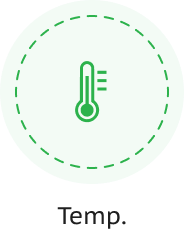
Temperature
Temperature – High temperatures create physiological stress on the human body which can cause the body to react with respiratory and cardiovascular diseases, diabetes mellitus and renal disease.
Temperatures too low inflame lungs and inhibits circulation and have been associated with respiratory and pulmonary health issues, increasing the risk of conditions such as allergies and asthma. Generally, most homes should be maintained between 84 and 63 degrees F.
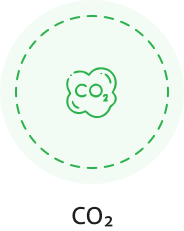
C02
Carbon dioxide is an odorless, colorless gas. It is a waste product that we breathe out. Average CO2 concentrations in occupied indoor spaces with good air exchange is from 400 to 1,000 parts per million.
Too much carbon dioxide inside your home leads to low energy, drowsiness, headaches and poor sleep. At very high levels, CO2 can cause asphyxiation as it replaces oxygen
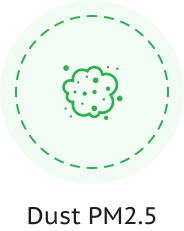
Dust
PM stands for particulate matter (also called particle pollution) and is typically measured in PM2.5. PM2.5 is fine particles that can be inhaled by the home’s occupants. Depending on the exposure time and duration too high levels of dust can cause both short term and long-term serious health problems. Dust can harbor the growth of dust mites, bacteria causing itchiness, asthma and eczema. Generally, PM2.5 should be maintained below 13ug/m3.
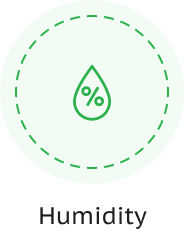
Humidity
Humidity is the amount of water vapor in the air. Humidity too high make us feel warmer and can propagate the growth of mold that could lead to extensive damage within the home. High moisture levels can cause symptoms that are similar to the common cold.
Too low of humidity can damage to wood items within the home, and can dry out causing inflammation of the mucous membranes that line your respiratory tract. It has also been linked to the rapid spread of viruses, and flu.
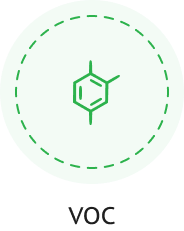
VOC
Volatile Organic Compounds are a large group of chemicals that are found in many products used in building materials in our homes. Once these chemicals are in our homes, they are released or “off-gas” into the indoor air we breathe. Older home are also susceptible to higher concentrations due to cleaning and other chemicals we used in our daily lives. If you suspect high VOC’s in your home, source control, fresh air ventilation and air cleaners such as Photo catalytic Oxidation (PCO) can bring levels of VOC’s down.

Total Air Index
When looking at the total air quaintly in the home PrimoAire created a Air Quality Algorithm Index by which the cumulative score gives you an idea about the current air quality condition in your home. Without the monitor connected to your Wi-Fi the Monitor will display colored lights from the top. Green is Good, Yellow is Fair & Red is Poor.





